Your parks need you now
Your support helps fight climate change and promote park sustainability—please give now.
Growing the native plants for the Golden Gate National Parks requires a special blend of soil made on a scale that’d make an earthworm blush.
Every year, the Parks Conservancy and the Presidio Trust combine forces to make enough fuel to feed thousands of seedlings at four native plant nurseries: Presidio, Marin Headlands, Fort Funston, and Oceana. It’s a process that takes many hands to keep running smoothly.
This year we made 46-cubic yards of potting soil from scratch—that’s equivalent to 368 wheelbarrows or about 9,300 liquid gallons (approximately 17 four-person hot tubs, if you’re wondering).
How did we do it? Here’s our step-by-step “recipe” for bulk-making compost:
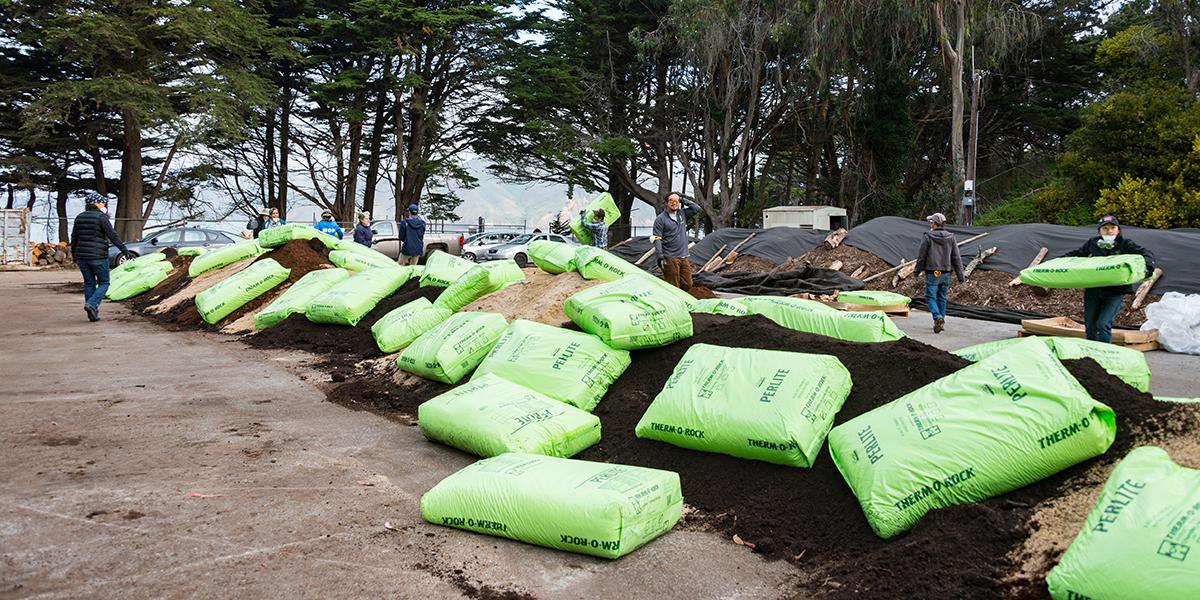
Step 1: Create compost
The Presidio Trust collects green waste (grass cuttings from the nearby golf course, branches trimmed from trees, weeds, even horse manure from the stables) and composts it for several months at their compost yard. With time, microorganisms break down the materials into a nutrient-rich compost, which is our primary ingredient.
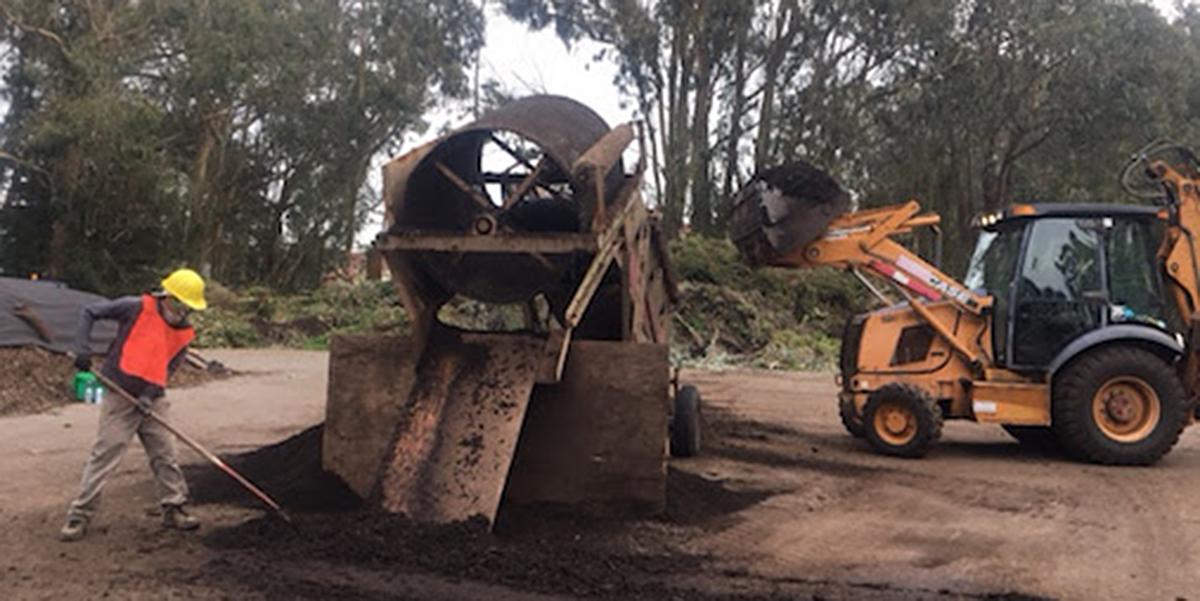
Step 2: Sift the compost
Seedlings grow best in a potting soil that is not too chunky. So, we sift-out big chunks using a specialized spinning screen operated by the Presidio Trust. It’s a process (kind of) similar to removing pulp from juice.
Step 3: Add sand and perlite
Seedlings need drainage for healthy roots, so we add additional materials to the compost. Sand and perlite keep our soil airy and not too wet. Who wants soggy roots? The seedlings sure do not!
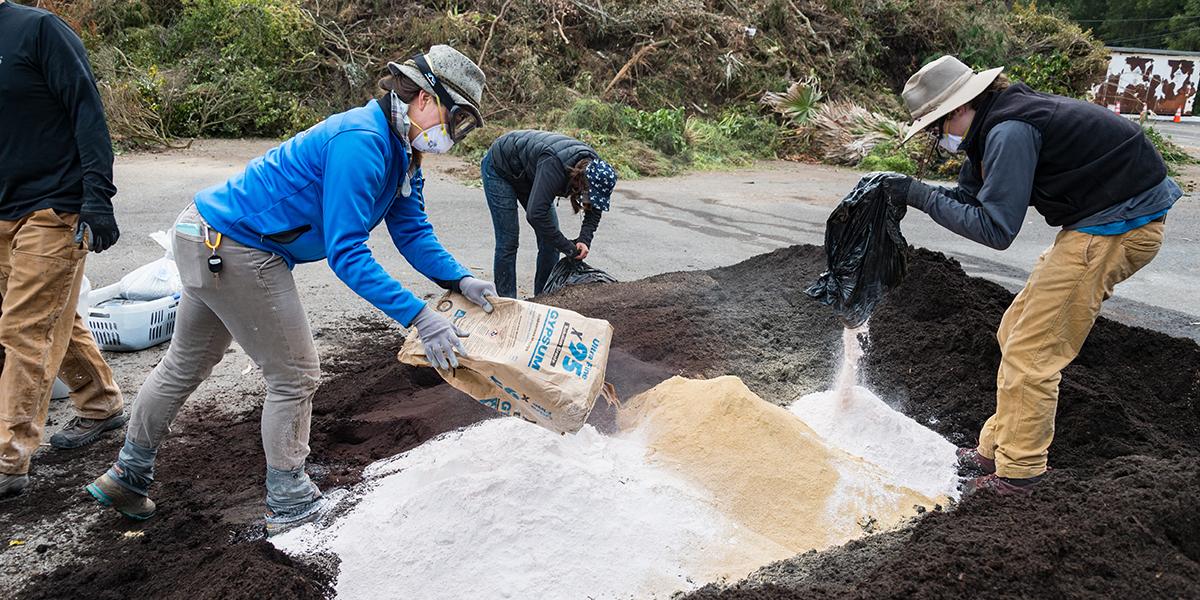
Step 4: Add micronutrients
After testing our compost’s chemistry and nutritional content, we ask Dr. Stephen Andrews, a consulting soil scientist from UC Berkeley, to create a custom recipe for extra delicious and nutritious soil.
Based on the composition of the compost made by the Trust, this year’s mix called for additional magnesium, calcium, sulfur, nitrogen, potassium, phosphorus, iron, and other trace elements.
Even though these nutrients are only a small percentage of the total mix, together they add up to 526 pounds (that’s about the size of an adult grizzly bear).

Step 5: Mix
Armed with a massive backhoe (similar to a bulldozer), the Trust’s Waste Reduction Team mixes all ingredients together in one massive mound.
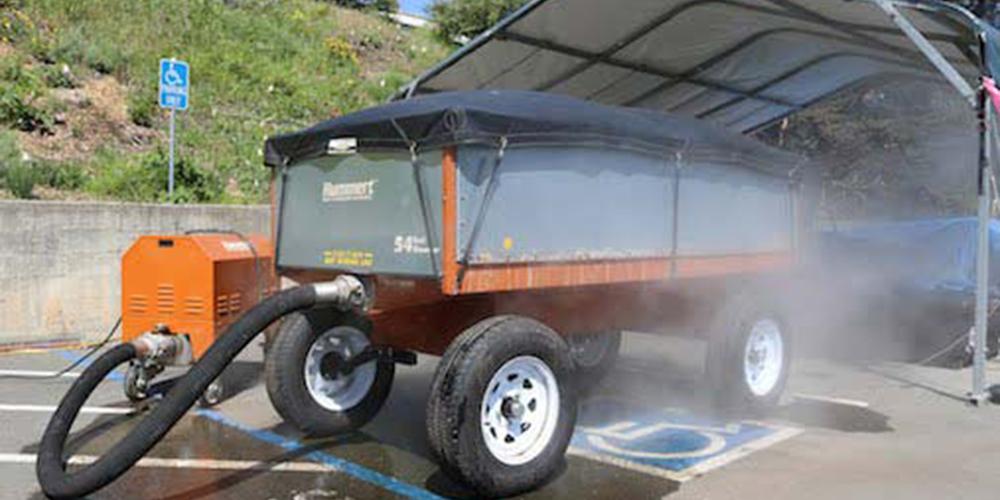
Step 6: Heat Treat
To make sure our soil is free of pathogens and safe for seedlings, we heat treat it with steam.

Step 7: Grow the plants!
Ta-da! Now with this “national park quality” potting mix, we can grow tens of thousands of native plants for restoration sites across the parks.
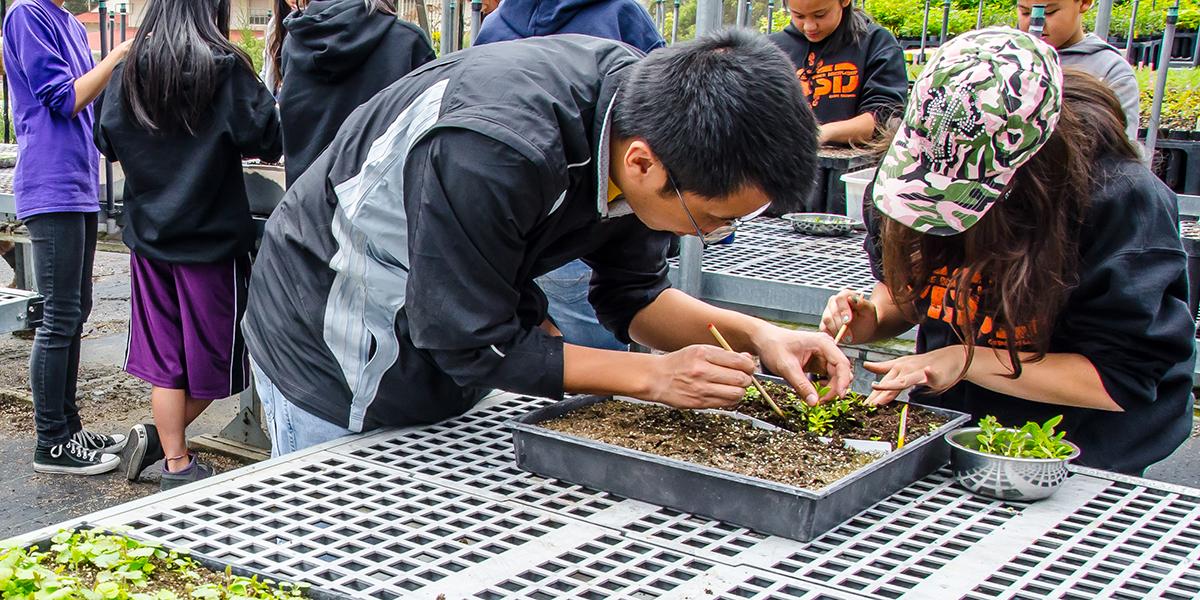
Step 8: Get your hands dirty!
Feeling inspired after reading our recipe? Why not sink your hands into our premium soil and help grow some plants by volunteering at our nurseries? Find an opportunity today.
After all, like us, plants need a custom diet and lots of TLC to thrive.
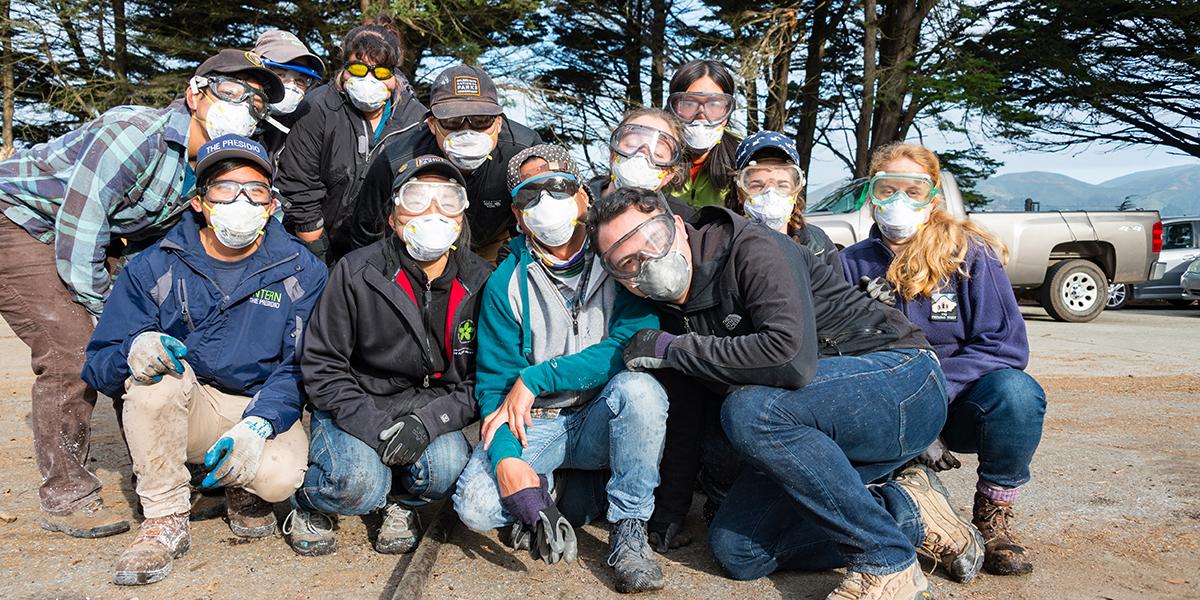
Your support helps fight climate change and promote park sustainability—please give now.